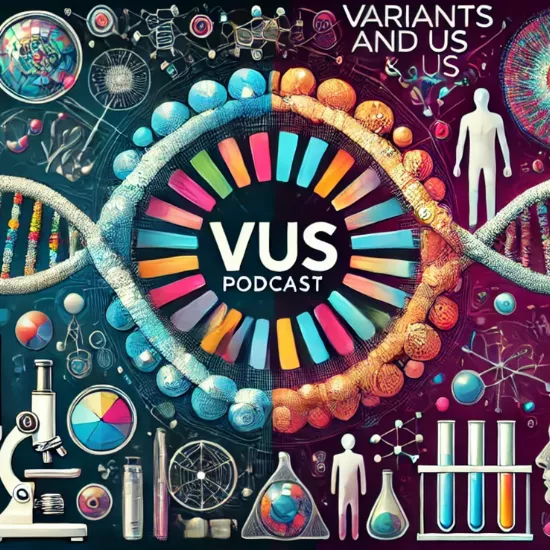UTM Psychology Professor Seeks to Identify New Therapeutic Target in Dementia Research

Could targeting a histone protein in the brain be the key to preventing neurodegeneration in Alzheimer’s patients?
Researchers in the Zovkic Lab intend to find out.

Iva Zovkic, Canada Research Chair and an associate professor in UTM’s Department of Psychology, was recently awarded a Proof of Concept Grant by the Alzheimer Society Research Program. The grant is co-funded by the Brain Canada Foundation.
Each year, the program funds dementia researchers across Canada, selecting projects in eight priority areas: care, cause, diagnosis, epidemiology, risk, therapy, translational, and treatment. In 2024, they awarded over $5 million to 40 researchers.
The Alzheimer Society’s Proof of Concept Grants fund innovative, high-risk, and high-reward research that pushes beyond our existing understanding of dementia. Zovkic was selected for her work on histone variants, a subgroup of proteins that “package” DNA into the cell’s nucleus and regulate access to genes so that they can be turned on or off.
How does the process work? Our DNA wraps around a bunch of histone proteins, and these create a physical barrier to “transcription,” the process of turning genes on. For a gene to be activated, proteins need to access it; however, by this point this access is limited by the tight wrapping of DNA around histones — because it’s so tightly wrapped, it can’t be activated. Incorporation of different types of histone variants is one factor that can affect the likelihood that a gene will be transcribed.
Zovkic studies the histone proteins responsible for wrapping DNA into the cell.
“In the beginning, my lab was interested in learning how memories form,” she explains. “But we realized that the histone variants, the category of proteins we were studying, were increasing with age — they’re elevated in an aged brain compared to a young brain. This ultimately led to an interest in understanding how these proteins become dysfunctional in Alzheimer’s disease.”
A difficulty with treating Alzheimer’s disease is that it involves dysregulation of many different types of proteins that have vital functions in normal cells.
It makes it difficult to identify a single therapeutic target.
Her lab, however, has found that one histone in particular — macroH2A1 — is dysregulated in the brains of Alzheimer’s patients. “This histone is different than all others,” says Zovkic. “It’s three times the size of every other histone and it contains an extra domain, called the macrodomain, which can bind poly-ADP-ribose.”
This binding allows macroH2A1 to interact differently with several proteins that other histones can’t interact with.
It’s a finding that has important implications. Studies link it with the regulation of two key proteins that are dysregulated in Alzheimer’s disease: PARP1 and SIRT1.
“A lot of proteins that become dysregulated do have normal functions in a normal cell. But now they’re just haywire,” says Zovkic.
PARP1-SIRT1 are two of many proteins that serve critical functions in the brain — think memory formation, protection from memory loss, and DNA damage repair — but become dysfunctional in Alzheimer’s disease.
Zovkic’s lab is testing the hypothesis that macroH2A1 is a master-regulator of the PARP1-SIRT1 balance in Alzheimer’s disease — and that its dysregulation in Alzheimer’s disease causes a PARP1-SIRT1 imbalance.
The two proteins compete for the same cellular resources; excessively high levels of one can lead to impaired function of the other. But we need them both: taking drugs that inhibit their activity completely can produce unwanted side effects.
Identifying macroH2A1 as a new therapeutic target would be a game-changer; if normal function can be restored, it would preserve the activity of all three proteins, preventing neurodegeneration and memory decline.
“Essentially, we’re bringing this positive regulator and this negative regulator in balance, so they’re both able to carry out their normal functions — and we won’t damage the cell in the process,” Zovkic says.
“We’re probably one of the only labs going after histone variants at this moment in Alzheimer’s disease,” she adds. “We think that understanding histone variants is really important — in Alzheimer’s and in all age-related dementia and conditions associated with neurodegeneration.”
“This Proof of Concept Grant is allowing us to ask these new questions and go in new directions that we haven’t really been able to study before.”
Funding from the grant will go to supporting research costs as well as a graduate student, who will join the team in working to identify macroH2A1 as a drug target.
“Our ultimate goal to develop new treatments for Alzheimer’s disease ties in nicely with the Centre for Medicinal Chemistry,” Zovkic says. “We hope to use our proximity to turn our discovery of novel therapeutic targets with the CMC’s capabilities in drug design.”
“There’s enough to suggest that we have a strong hypothesis. And that’s what’s so exciting about this grant — it gives you a boost to show that the hypothesis has merit. And then you can explore it in greater detail afterward.”



